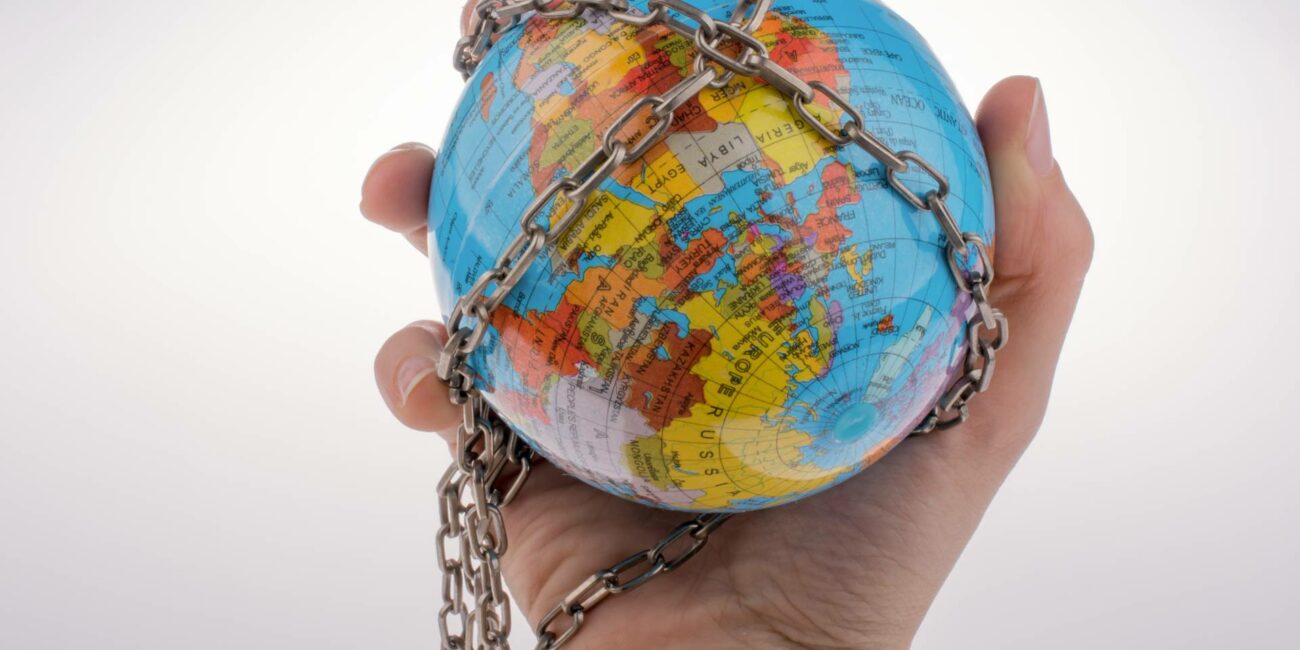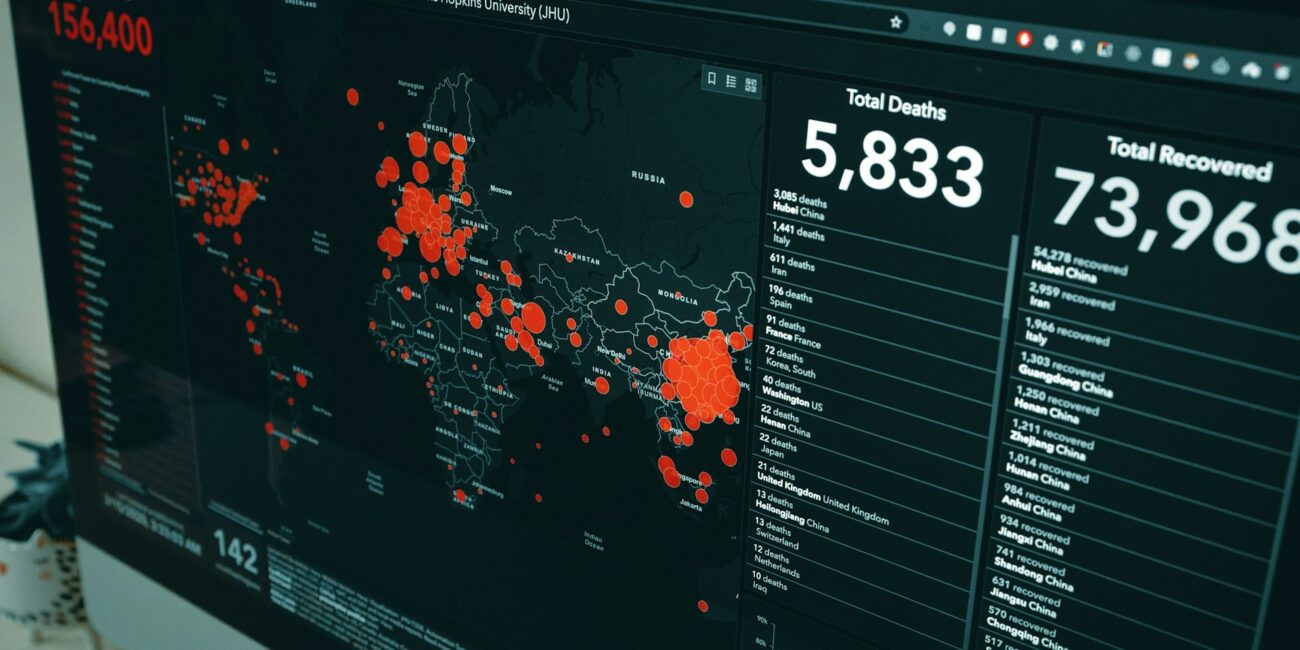by Dr David Bell
The rapidly-growing pandemic preparedness industry is dominating global public health and proving increasingly lucrative. To support this agenda, numerous white papers are emerging, sponsored by such institutions as the World Bank, G7, G20 and World Health Organization that insist that pandemics are increasing in frequency and impact. A glance at global burden of disease statistics, or a few moments of common sense, show that this is not true. This presents an awkward problem that is being handled by simply ignoring evidence and context, and repeating the increasing-pandemic-risk mantra as frequently as possible.
Past authoritarian approaches of the type relied heavily on revising history to lend credence to their claims. Here follows such an attempt, recommended as background for their next round of white papers.
“History is written by the winners. Clever people also rewrite it to ensure they win. If the public health industry is serious about expanding its salary base and centralizing wealth, it must manage pandemic history with foresight.”
Pfizodotus, 425 BC.
The importance of correct understanding
The globally catastrophic pandemic of the past 3 years has underlined the reality that our species only survived to the cusp of 2023 through pure chance. Indeed, without late but timely intervention of big philanthropy, big Pharma and the digital revolution, we would have been wiped from existence like viruses in a town under curfew. Yet despite this respite, free speech and accessible data threatens to undo all our hard-won gains.
The unfettered circulation of misinformation and disinformation regarding pandemic risk is leading large sections of humanity into independent thought and non-conformity. This threatens not only our democracy, but threatens the corporate authoritarianism utopia that our leadership deserves. The public must understand that their very existence is based on pure chance, and future survival is entirely dependent on coalitions of hard-working scientists, wealthy benefactors and a steadily expanding international bureaucracy. As we move on from Covid to a permanent state of heightened anxiety, we cannot afford the infiltration of alternate viewpoints that challenge this ideal.
To fully appreciate the need to be saved, people must be brought to an appropriate understanding of pandemic history and pre-history. ‘History’ is essentially his-story, a cis-gendered rendering of a particular reality designed to make the hearer (or reader- you) think more correctly. Without a correct understanding of history there is a real danger that people will start drawing their own conclusions.
Systematic development of correct conclusions regarding pandemic impact on human society is therefore essential for progress and community acquiescence. The following, based on prevailing notions underpinning the World Health Organization’s (WHO) treaty development process and recent World Bank / G20 white papers, is intended to set the historical record straight.
The era of extinction
Most species that lived on earth are now extinct. That alone tells us enough of what pandemics can do, and the intrinsic danger of trying to continue life without inorganic enhancement. Trilobites, stegosaurs and glyptodonts never had that opportunity. Our hominid line is not yet extinct, but Neanderthals, Denisovans and our Homo floriensis cousins have all paid the price of elevating bodily autonomy. So on a sub-species level, we must face the reality that most humans have already died out. Rationally, this should bring us to the edge of panic; a state that should be encouraged.
Pandemics and empires
Around 701 BC, the siege of Jerusalem was aborted, the Assyrian army having been struck down by an epidemic. Whilst some sources credit external influence, historians agree the entire Assyrian army was not only unboosted, but most hadn’t had their first dose. The lessons are clear, and modern armed forces leave less to chance.
Within a few hundred years, the Athenian Plague of 430-426 BC caused 25% mortality in the city and devastated much of the Mediterranean world. Thucydides, an Athenian science-denying conspiracy theorist, developed the long-running myth that survivors were protected from further severe disease. Still haunting humanity today, this conspiracy of ‘natural’ immunity explains the subsequent decline of Greek power. Dis-information had become a national security issue.
The Romans, after a stuttering start, gained ascendency over infodemic-afflicted Greece. The successful centralization of public health under Augustus kept people safe within the pax-Romanus for over two hundred years. All fell apart with the Plague of Cyprian in 250-270 AD. This prolonged outbreak is probably explainable by a lack of basic antibiotics, usefully characterized as an insistence on the use of natural and non-approved remedies. Plagues kept recurring with the spread of unauthorized belief systems and the empire entered terminal decline. A glance at Rome today shows the costs that unapproved treatment and disobedience to the state can wreak.
In 541–543 AD the Plague of Justinian devastated the Byzantine Empire. Probably a bubonic plague caused by the bacteria Yersinia pestis, the continued failure to invent antibiotics prevented Pharma and their regulatory agencies from monetizing it effectively. It did, however, set an excellent example of how central authorities could raise taxes and impoverish the populace to address pandemic harms; a precedent that guides management to this day.
Medieval talismans and more mass death
The Black Death of 1347–1351 was just one of several rounds of bubonic plague to devastate Europe and other less important places. Brought from the Crimea by unmasked Genoese, Sicily failed to close its borders early enough and essentially let it rip. Up to a third of the European population died, the remainder surviving only through the invention of strange, beak-like masks. Homo sapiens stumbled on into the 19th century, kept alive largely by global philanthropic enterprises such as the British and Dutch East India Companies. This really set the basis for the modern global health industry, centralizing public health under good, honest European suzerainty.
Globalization through European corporate authoritarianism worked. Wealth was concentrated and the inefficiencies of self-government and human rights eliminated over vast swathes of Asia, Africa and the Americas. However, globalization also brought mass intercontinental travel, with its inevitable spread of pestilence and planet-harming excess. The first of several cholera pandemics in 1817–24 was the result. Subsequent rounds of typhus and uncontrolled syphilis even threatened to afflict important people.
In 1918-19 the Spanish Flu killed 20 to 50 million people, facilitated by let-it-rip policies that allowed used soldiers to return from European battlefields. Most deaths resulted from secondary bacterial infections in the face of a continued absence of antibiotics, but this should not be construed as suggesting the current availability of antibiotics would prevent a recurrence. Contrary to the claims of flu-deniers, antibiotics and anti-virals are only effective within patent. Antibiotics out of patent are for horses.
As the last pandemic of the pre-antibiotic era, the Spanish Flu is important for the elevation of fear. To understand the mortality in a modern context, disease modelers can adjust its 50 million deaths for population increase, further adjust for global warming, and round up to the next billion or two. This translates into a lot of deaths.
The advent of antibiotics
The development of antibiotics may have transformed survival from respiratory infections, but this in no way should be taken as evidence that they have transformed survival from respiratory infections. WHO records 3 pandemics in the 100 years prior to COVID-19, killing far less than three years of tuberculosis, but this WHO list relied on a rather silly pandemic definition that required severe disease and death. WHO’s pandemic mortality estimates also erroneously ignored unrelated causes.
Fortunately, WHO’s past mistakes are easily fixed. Using current Science-based definitions (any virus crossing a border that looks vaccinable), and multiplying by bat prevalence over the past century, it is estimated that roughly 37 pandemics must have occurred during this period. If we then add death back into these pandemics based on Spanish Flu data, and multiply by 3 for subsequent population increase, we find that over 5.5 billion people have actually died from pandemics in the hundred years before Covid. This total, amounting to more deaths than all causes combined, does not even factor in the climate crisis. Our survival is barely explainable.
The late pre-Covid era was marked an heroic struggle of Science against seemingly over-whelming odds. Attempts to use viral spread to cement the building of a safe subservient society were subverted by a media and political class infiltrated by un-instructed people. Due to this poisoning of the public mind, SARS, Swine Flu and MERS all failed to elicit the level of hysteria and psychosis that we now take for granted. It is easy to forget how difficult this period was for those who bear the burden of managing humanity. As sponsorship of WHO proved insufficient, a whole new international health apparatus had to be developed. The creation of CEPI and a whole bevy of eponymous foundations proved necessary to direct public health and buy the media. It is our duty, as beneficiaries, to recognize this work and show more contrition and subservience in return. Enslavement is such a small price to pay to be safe.
Covid-19: Getting pandemics back on track
In (roughly) September 2019 a confused bat flew worryingly close to the Wuhan Institute of Virology, defecating on a pangolin that happened to get a job in the wet market 3 months later. Fortuitously, Johns Hopkins University, some eponymous foundations and the Western leadership training program of the World Economic Forum (WEF) met in New York in October, completely unaware of these zoological encounters to the east.
This New York meeting transformed public health by finally establishing a way to transfer lockdowns from prisons to general society; by treating the populace as prisoners. In November, the WHO didn’t release its November 2019 pandemic influenza guidelines, and therefore never advised against lockdowns. This essentially proves that lockdowns have always been orthodox public health policy.
The rest of this period is well known to the reader. The New York Times Swiss cheese model proved that cloth masks stop aerosolized viruses. The effectiveness of lockdowns was demonstrated by the carnage in Sweden, Florida and Tanzania. The closure of schools not only saved countless children and their grandparents, but ensured that children from low-income and poorly performing families would never have to compete with those whose parents worked on Zoom.
But all was not well. Like a virus among misogynists, an infodemic spread, letting the weak and reckless have family dinners and remove masks on sports fields. The mass unemployment, poverty and supply lines destruction resulting from this behavior should serve as a wake-up call; we must take misinformation and disinformation seriously. Free speech does not mean freedom to have opinions.
Humanity, once more on the cusp of extinction, was rescued when scientists working around the clock found a way to insert mRNA into the ovaries, livers and myocardium of children, pregnant women and their fetuses. This breakthrough assigned the Thucydides ‘natural immunity’ cult to the rubbish bin of history. Future generations will marvel at how anyone could promote million-year-old immune processes over shiny new genetic therapies.
The post-Covid awakening
Looking forward to mid-2025, we can confidently expect the 19th polyvalent booster, updated for flu, RSV, rhinovirus, fentanyl and progesterone, to save us comprehensively. The potential to peg vaccine compliance with the right to access groceries and water will remove the need for coercion, thus eliminating any residual human rights concerns. Winter lockdowns promise to save us even more, making threats such as monkeypox survivable for much of the population. The PfizerNet surveillance network will predict variants before they even mutate, locking down whole countries for months to keep the rest of us safe. There will be times when people can meet openly in groups of more than seven.
While living on the verge of extinction seems frightening, the potential for corporate authoritarianism to assuage some of that fear should bring comfort. But we can only reach this state if we control the infodemic that swirls around us. Failure to address dissent promptly risks leaving people susceptible to independent thought. To avoid this cognition trap, we must listen only to those who are our single source of truth. Our benefactors are working tirelessly to suppress all contrary information, cancelling and denigrating the conspiracists who threaten our hard-won gains. We can only hope that those who labor so hard to keep us safe will gain massively from their portfolios as partial recompense for their efforts. Humanity owes them that, at least.
Useful sources:
WHO: Non-pharmaceutical public health measures for mitigating the risk and impact of epidemic and pandemic influenza. https://apps.who.int/iris/bitstream/handle/10665/329438/9789241516839-eng.pdf?ua=1
The 1400 alumni of the WEF’s Young Global Leaders program who have set such a strong example of right-think and obedience in these trying times. https://www.younggloballeaders.org/
David is a clinical and public health physician with a PhD in population health and background in internal medicine, modelling and epidemiology of infectious disease. Previously, he was Director of the Global Health Technologies at Intellectual Ventures Global Good Fund in the USA, Programme Head for Malaria and Acute Febrile Disease at FIND in Geneva, and coordinating malaria diagnostics strategy with the World Health Organization.




